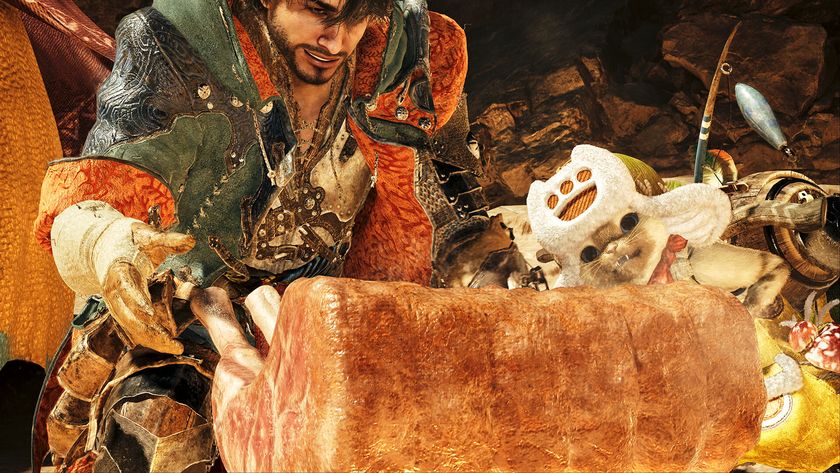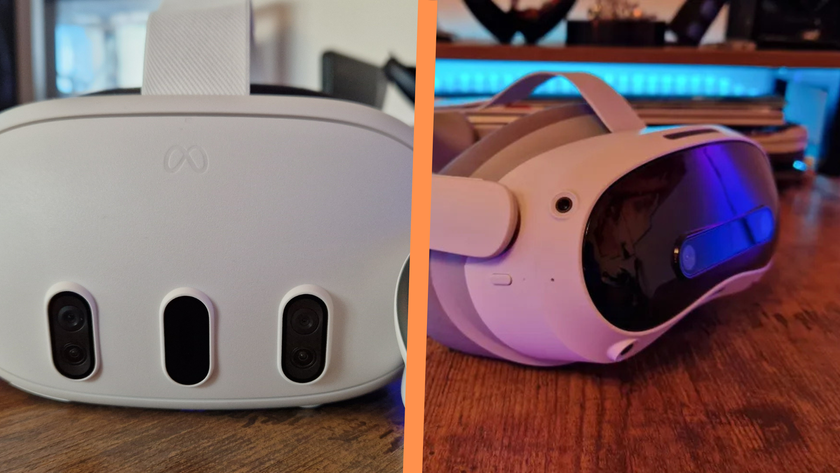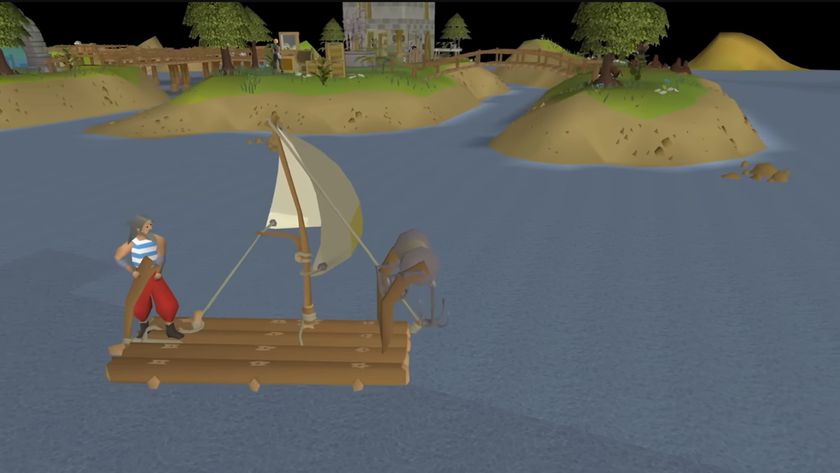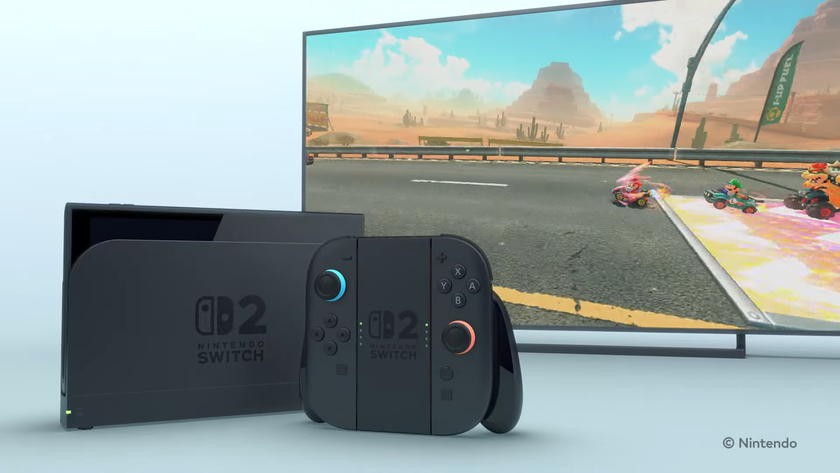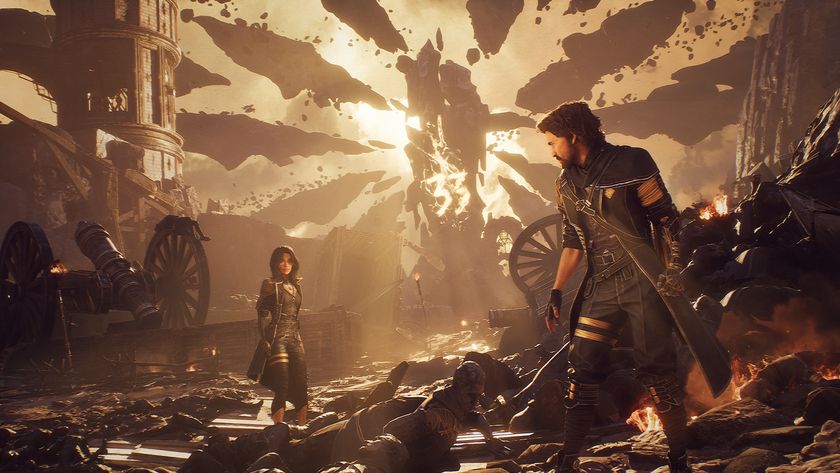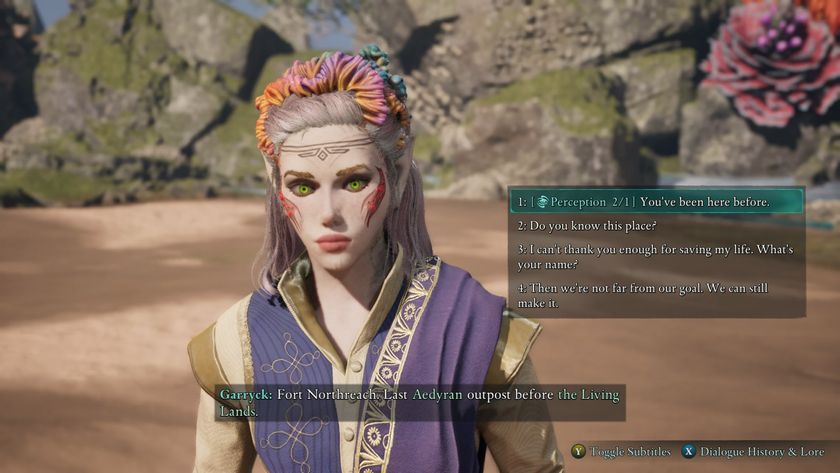Escape Goat 2: From empty space to finished level
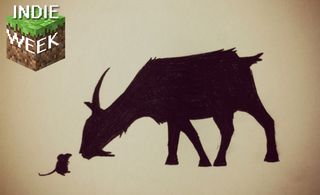
Making something out of nothing
Every video game level started out as a completely blank slate. Piece by piece, whoever designed the level had to plot out what they wanted the player to accomplish, and the path they would take to do so. But we don't often take the time to stop and think about that; we just plow on through to the next area, blissfully unaware of just how much work went into the creation of our surroundings. A bit like real life, really.
Ah, but where were we? Video games, yes. In the spirit of Indie Week, we're giving the floor to Ian Stocker, who's been kind enough to take us through the level creation process--specifically those of puzzle platformer Escape Goat 2 (which you should go vote for on Steam Greenlight). Just as he did before, Stocker explains how he envisioned two stages in the goat-based dungeon crawler, and how he devised the perils that our purple-haired hero must overcome. Let's listen, shall we?
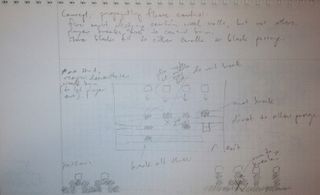
Wooden Fuse, Step 1: Concept
"A new environmental behavior in Escape Goat 2 is how wood reacts to fire. When a wood wall is struck by fire, it slowly burns, then propagates the flame to adjacent walls. This creates kind of a "fuse" that can be used as a timer. If part of the wall is destroyed, it can break the chain reaction, like cutting a fuse.
"My goal is to make a level where the player has to cut the fuse in time by breaking part of the wall. If the whole wall burns, too many stone blocks fall and the path between the key and exit door is blockaded. The player will need to use the goats headbutt ability to break part of the wood wall before too much of it is destroyed."
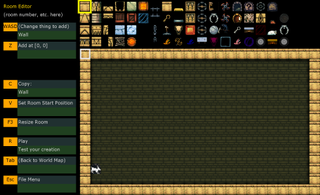
Jumping into the level editor
"This is the Escape Goat 2 level editor. Its not very pretty yet, but it gets the job done. This is how all rooms start: empty space enclosed by walls on all four sides."
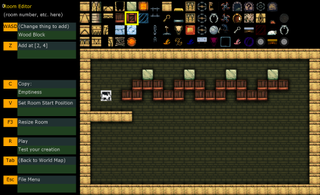
Step 2
"First Im building the fuse out of wood walls, and putting some stone blocks on top. As the wood burns, the blocks wall fall to the floor."
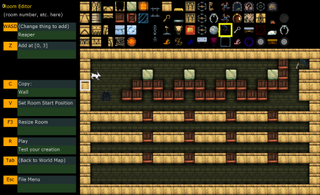
Step 3
"Ive put some extra layers of floor. As the stone blocks fall, they will destroy the wood walls in their way due to their weight. On the top right Ive added a Reaper, who tries to shoot fireballs at the goat. Hell serve as the ignition for the fuse."
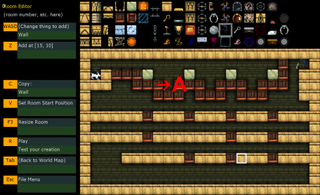
Step 4
"Ive made it so the leftmost stone block will now block the path to the bottom. I also force the player to enter the Reapers line of vision, ensuring the wood gets ignited. The problem here is that the player can simply headbutt the wood wall (A) and easily reach the bottom."
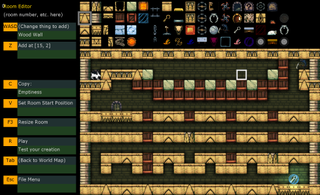
Step 5
"To prevent this easy solution, I add extra stone blocks so the goat cant headbutt any wood walls from the sides. I also did some decorating on the level by using alternate wall tiles."
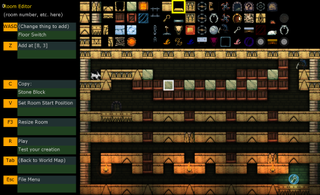
Step 6
"Adding lighting to the level for a bit more ambience."
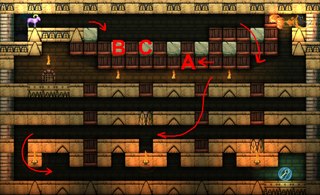
Step 7: Playtesting
"I had three friends play this level, and observed how long it took them and what decisions they made. This is my chance to check difficulty level and overall quality of the puzzle. Ultimately, the player needs to feel like they solved the puzzle through some degree of skill, and not through trial and error."
Playtester A: Tried to race the blocks at first and beat the room with sheer speed. When this didnt work, she took some time to think about what to do. After about 3 minutes and 8 attempts, she figured it out.
Playtester B: Is this a speed thing? Tried several times to use speed to outrun the fuse. Got very close on a couple attempts. Its so close that it seems like it should be possible. Beat in about 3 minutes and 10 attempts.
Playtester C: Oh, I stopped the fire! How did I stop the fire? after beating the level. About 5 tries and 2 minutes.
Verdict: "Players liked this one pretty well, and its easy enough that it could appear early in the campaign. It would be a good way to introduce the concept of fire propagation. The placeholder animations for this arent conveying whats happening well enough though, so they need to make it very obvious when the fire fizzles out."
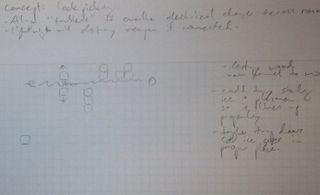
Lightning machine connections, Step 1: Concept
"Lightning machines can be turned off with switches in the room, and they can also be turned off if the arc is obstructed by an obstacle. My idea is to make a level where you have to manipulate blocks up and down, so you are allowing certain lightning machines to be connected while disconnecting others."
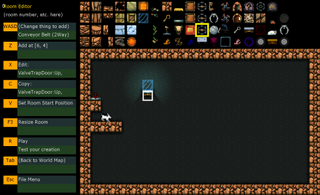
Step 2
"My first idea is to use these glowing plasma blocks, which allow electricity to pass through them, but other blocks stack on top of them. Maybe I can have a block stacking puzzle where you have to put plasma blocks and stone blocks together in the right order to connect the circuit?"
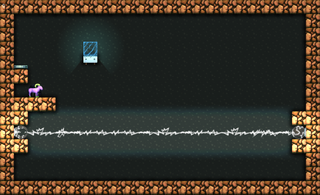
Step 3
"The plasma is on a trap door (controlled by the switch at the top left) and the lightning machine is in place."
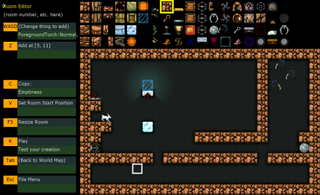
Step 4
"Now theres a floor for the block to land on. Ive put an ice block here that will fall and immediately break the lightning arc. Ive also put some Reapers on the right which youll need to use the lightning to destroy."
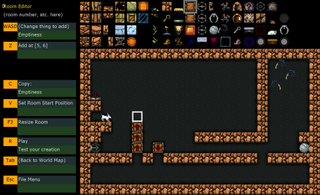
Step 5
"After messing around with this setup for several minutes, I back off from the block stacking idea, which doesnt seem to be materializing. Instead I put in some gear blocks, which move up and down when powered. Now the red switch will cause the blocks to move out of the way, and let the lightning machine connect."
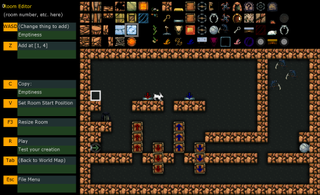
Step 6
"To make things more interesting, Im trying two sets of gearblocks (red and blue). Each has its own switch."
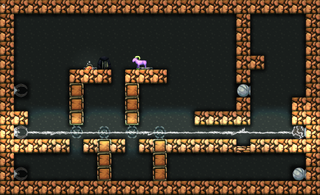
Step 7
"Ive added two more lightning machines. Using the mouse to press one switch and the goat to press the other, both block sets move out of the way of the middle lightning machine, allowing a connecting. They also break the connection of the top and bottom lightning machines."
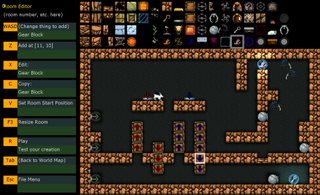
Step 8
"Im going to add the Magic Hat to the mix, so this puzzle will involve teleporting at some point. Im thinking that youll need to send the mouse behind an active lightning machine, and teleport to him to obtain the key (bottom right). To reach the Magic Hat, youll need to connect the middle lightning machine to destroy the Reapers."
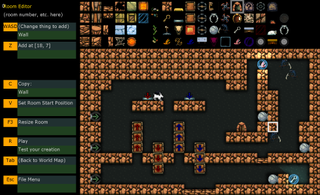
Step 9
"I carved out a bit of the floor beneath the blue gear block set, so that even when the blocks are in the downward position, the mouse can slip underneath. Ive also added some walls to enclose things a bit more and give the level a unique shape."
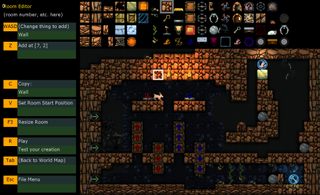
Step 10
"The level is tested and works, so its decoration and lighting time."
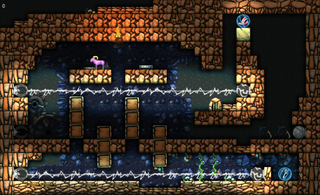
Step 11: Playtesting
"The final version in action."
Playtester A: Tried a lot of different things before discovering the solution, took about 15 minutes.
Playtester B: After struggling about 8 minutes, discovered an alternate solution where you can send the mouse down through the gap in the gear block while it is moving. It requires precise timing so it took several attempts, but it worked.
Playtester C: Figured out the intended solution almost immediately, which is to send the mouse along the outer wall and under the small gap in the second gear block group.
Verdict: Rather difficult, and would appear in the second half of the game. No changes needed.
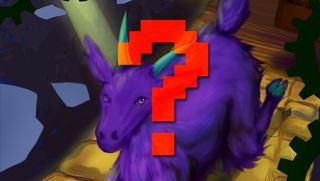
A goat/mouse duo for the ages
Much obliged, Ian! We're stoked to play Escape Goat 2 when it's released this September; in the meantime, you should go vote for it on Steam Greenlight right this instant. You can also peruse more of Ian's stellar work at MagicalTimeBean.
And if you're looking for more, check out 8 rising indie developers to watch and 12 amazing indie games you've never played (by indie devs you love).

Lucas Sullivan is the former US Managing Editor of 12DOVE. Lucas spent seven years working for GR, starting as an Associate Editor in 2012 before climbing the ranks. He left us in 2019 to pursue a career path on the other side of the fence, joining 2K Games as a Global Content Manager. Lucas doesn't get to write about games like Borderlands and Mafia anymore, but he does get to help make and market them.

"We got heel Cena before GTA 6": Even John Cena himself is comparing the 20-year wait for his WWE heel turn to the 12-year wait for the next Grand Theft Auto
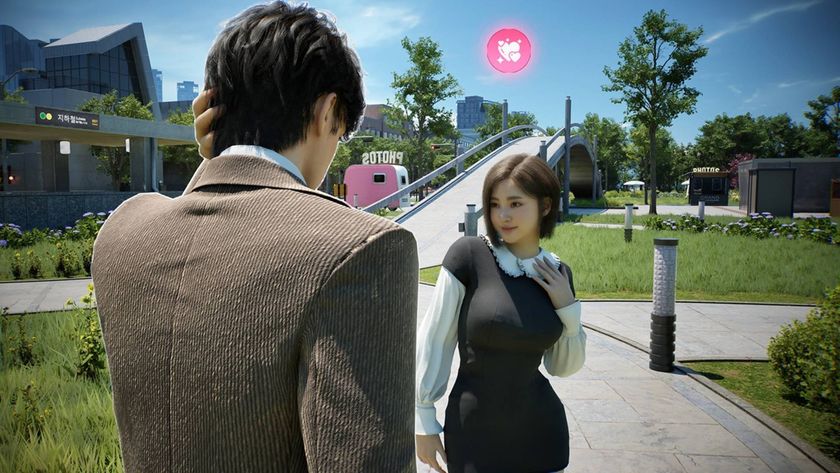
InZOI director hopes the Sims rival will be "successful and beloved," continues moonlighting as a philosopher: "Life is a tragedy when seen up close, but a comedy when viewed from a distance"

"We got heel Cena before GTA 6": Even John Cena himself is comparing the 20-year wait for his WWE heel turn to the 12-year wait for the next Grand Theft Auto

InZOI director hopes the Sims rival will be "successful and beloved," continues moonlighting as a philosopher: "Life is a tragedy when seen up close, but a comedy when viewed from a distance"

